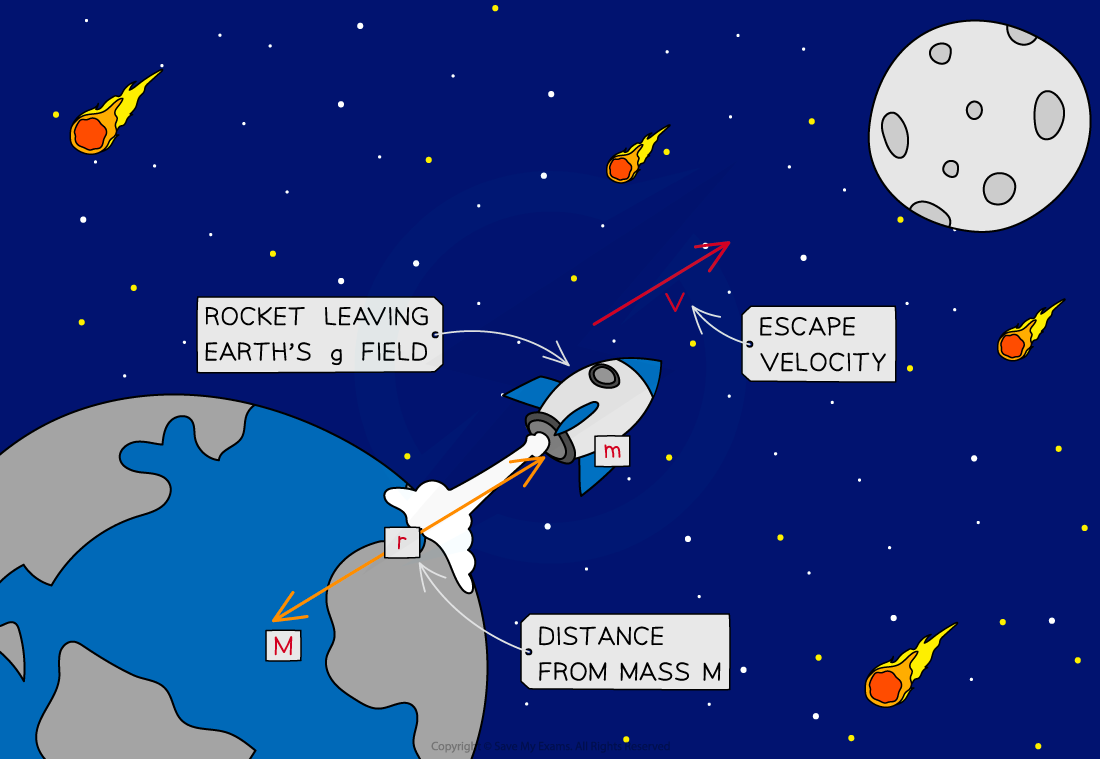Escape Velocity (College Board AP® Physics 1: Algebra-Based): Study Guide
Escape velocity
To escape the gravitational field of a central body, a satellite must travel at, or above, a minimum escape velocity
This is dependent on the mass and radius of the central body creating the gravitational field
Examples of central bodies include planets, moons, or even black holes
Escape velocity is defined as:
The minimum velocity that will allow an object to escape a gravitational field with no further energy input
The escape velocity of a satellite is such that the mechanical energy of the satellite–central-object system is equal to zero
If a satellite reaches escape velocity, it will:
move away from the central body
have a velocity of zero at an infinite distance from the central body
This is assuming that the only force exerted on the satellite is the gravitational attraction of the central object
Escape velocity of the Earth

Rockets launched from the Earth's surface do not need to achieve escape velocity to reach an orbit
This is because the orbit would still be within Earth's gravitational field
Therefore, less work would be required to move to this position than to escape the Earth's gravitational field entirely
Derived equation
The escape velocity of a satellite from a central body of mass
is:
This equation can be derived using energy conservation laws
Step 1: Identify the fundamental equations
The kinetic energy
of a satellite is:
The gravitational potential energy
of a satellite is:
Where:
= mass of the satellite, in
= escape velocity of the satellite, in
= Universal gravitational constant
= mass of the central object, in
= distance between the satellite and the center of the central object, in
Step 2: Apply the specific conditions
The escape speed of a satellite is the speed at which all its kinetic energy has been transferred to gravitational potential energy
Since mass
is the same on both sides of the equation, it cancels out:
Multiplying both sides by 2 and taking the square root gives the following equation:
This equation shows that escape velocity is the same for all masses occupying the same gravitational field
For example, on Earth, the value of escape velocity is the same for both a satellite and a tennis ball

Unlock more, it's free!
Did this page help you?